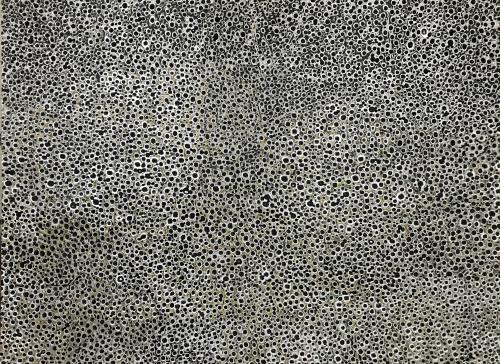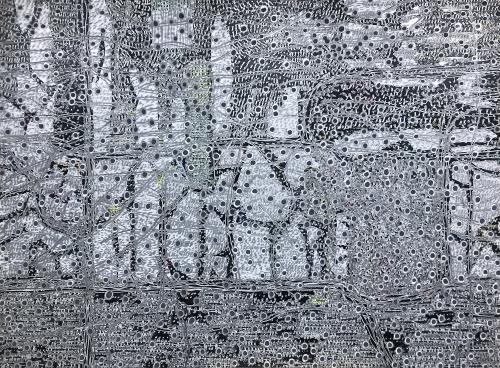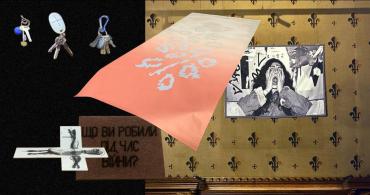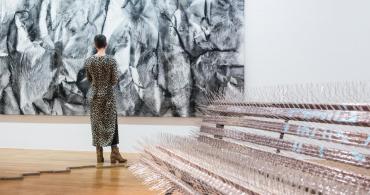Oleksiy Sai's solo show Exhibition at Voloshyn Gallery
This project was scheduled to start on February 24, 2022, the day when Russia’s full-scale invasion of Ukraine began. The exhibition actually opened, though the presentation happened for a very limited audience, namely the artist himself, his friends, and his family, all of whom used Voloshyn Gallery as a bomb shelter at the time. Displayed in the historical center of Kyiv, these works both witnessed the moment when an eight-year-long simmering conflict turned into a full-scale war and participated in it. The exhibition has been covered by a number of publications, with editorials in the likes of The New York Times, Miami Herald, W Magazine, NPR, and Glass Magazine telling the world about the events taking place in Ukraine.
In 2023, Oleksiy Sai’s Exhibition finally opens to the public. The series comprises images of landscapes of the East of Ukraine pockmarked by explosion craters left by the war. The artist almost completely ruined his previous works from the Excel-Art series, transforming them into textured maps of destruction. It was started back in 2014 as Sai’s reaction to the beginning of the war. For him this process resembled therapy that would allow to deal with harsh emotions triggered by the situation. Oleksiy Sai is the artist who uses different media. His works were exhibited at Black Square Gallery (Miami, the USA), Saatchi Gallery (London, the UK), Bunsen Goertz Gallery (Nurembreg, Germany), and others.

In his Images of the World and the Inscription of War, the documentary filmmaker Harun Farocki focused on the “blind spots” in interpretations of aerial photographs created during the US bombing of a German factory in 1944. It wasn’t until the 1970s that a CIA analysis of WWII archives discovered that these photographs were among the earliest evidence of the existence of Auschwitz: they just were not recognized as such at the time. The landscape and its relief appeared as witnesses to and participants in the historic process where each pothole, groove, or protrusion was a clue or element of memory. The function of landscapes in Sai’s project is somewhat similar.
Curator of the Exhibition — Natalia Matsenko
The project is open to the public from August 17 at Voloshyn Gallery (Kyiv, 13 Tereshchenkivska St.)
To read more articles about contemporary art please support Artslooker on Patreon
Share:




